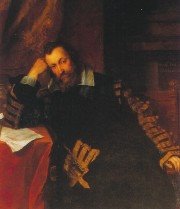Wednesday, 23 May 2007
Mary's story - 6
* * *
Marriage to Darnley
At the Palace of Holyroodhouse on July 29, 1565,
Mary married Henry Stuart, Lord Darnley, her first cousin.
The union infuriated Elizabeth, who felt she should have been asked permission for the marriage to even take place, as Darnley was an English subject. Elizabeth also felt threatened by the marriage, because both Mary and Darnley were claimants to the English throne, as Darnley and Mary were descendants of Margaret Tudor, the sister of Henry VIII. Their children would inherit both parents' claims, and thus, be next in line to the English throne.
This marriage, to a leading Catholic, precipitated Mary's half-brother, the Earl of Moray, to join with other Protestant Lords in open rebellion. Mary set out for Stirling on August 26, 1565 to confront them, and returned to Edinburgh the following month to raise more troops. Moray and the rebellious lords were routed and fled into exile, the decisive military action becoming known as the Chaseabout Raid.
Before long, Mary became pregnant. Darnley became arrogant and demanded power commensurate with his courtesy title of "King", and on one occasion Darnley attacked Mary and unsuccessfully attempted to cause her to miscarry their unborn child. Darnley was jealous of Mary's friendship with her private secretary, David Riccio, and, in March 1566 Darnley allegedly entered into a secret conspiracy with the nobles who had rebelled against Mary in the Chaseabout Raid. On March 9 a group of the lords, accompanied by Darnley, murdered Riccio in front of Mary while the two were in conference at Holyrood Palace. Darnley changed sides again and betrayed the lords, but the murder was the catalyst for the breakdown of their marriage.
Following the birth of their son, James, in 1566, a plot was hatched to remove Darnley, who was already ill (possibly suffering from syphilis). He was recuperating in a house in Edinburgh where Mary visited him frequently, so that it appeared a reconciliation was in prospect. In February 1567, an explosion occurred in the house at Kirk o'Field, and Darnley was found dead in the garden, apparently of strangulation. This event, which should have been Mary's salvation, only harmed her reputation. James Hepburn, 4th Earl of Bothwell, an adventurer who would become her third husband, was generally believed to be guilty of the assassination, and was brought before a mock trial but acquitted. Mary attempted to regain support among her Lords while Bothwell got some of them to sign the Ainslie Tavern Bond, in which they agreed to support his claims to marry Mary.
http://en.wikipedia.org/wiki/Mary_queen_of_scots
* * *
Subscribe to:
Post Comments (Atom)

No comments:
Post a Comment